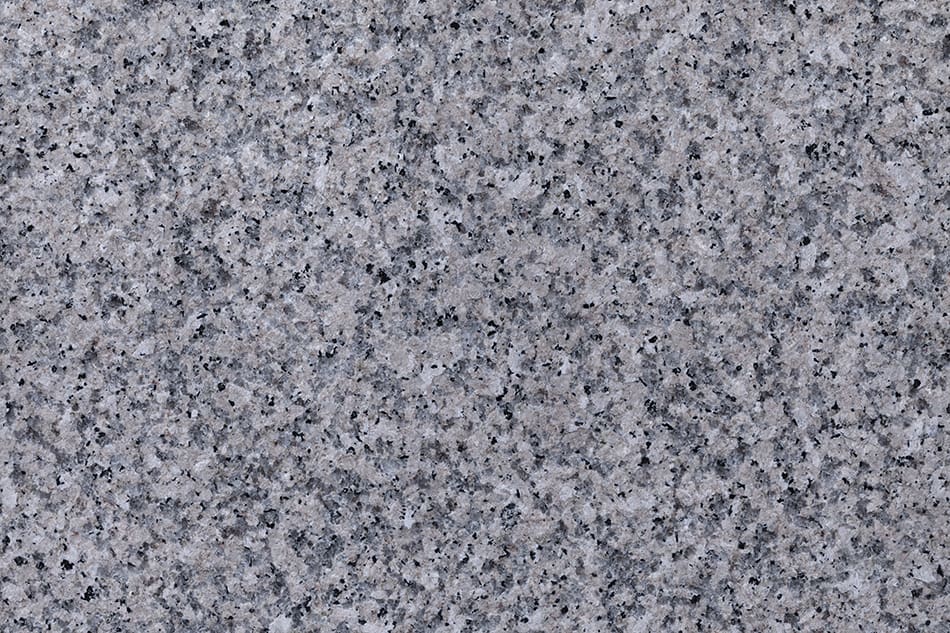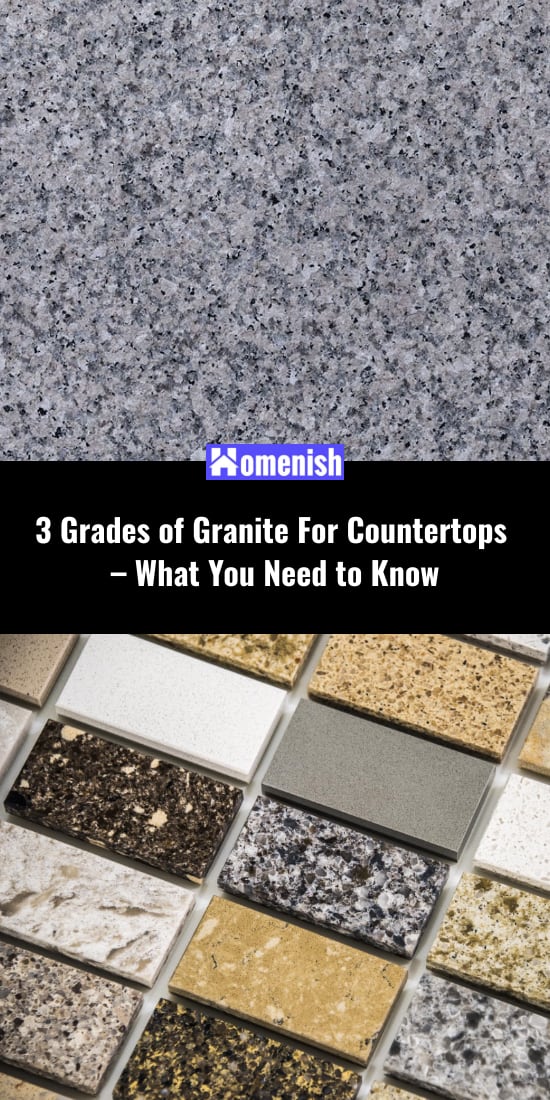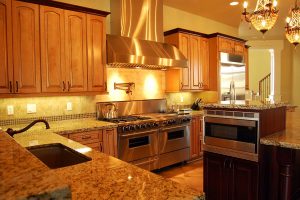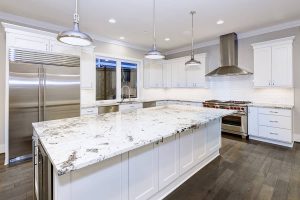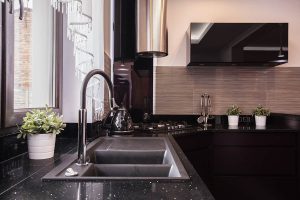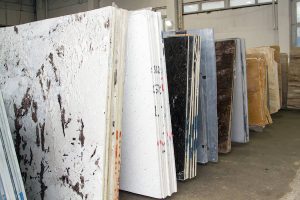Are you planning to have your kitchen remodeled? If so, then you could be thinking of upgrading your kitchen countertops to granite. This is a wise and practical decision to be made, considering that granite is a popular material for countertop surfaces. It’s not only stylish and beautiful but also heavy, strong, water-resistant, and durable. Suffice it to say that a granite countertop can last for many years.
Granite comes from the Latin word ‘granum,’ which means grain. This refers to the presence of a coarse-grained structure in the material. Granite is an igneous rock consisting of a minimum of 20% quartz and a maximum of 65% alkali feldspar.
When shopping for granite, there’s something you need to know– that this material is graded in three tiers. Granite grades are determined by factors like thickness, origins, porosity, coloring, marking, and patterns, among others.
Grades of Granite
Granite grades are used to measure or determine the quality of the material. It can be affected by aspects such as the visual appearance of the stone as well as its thickness and porosity. The origins, patterns, and colors of the granite can also affect its grade.
The visual appearance of the granite is arguably the biggest consideration in determining the stone’s grade. In short, a granite with unique colors and patterns is likely to get a higher grade than one with a standard appearance.
The origins of the granite can also affect its grade. Granite from China usually has the lowest cost, making it fall under grade 1. On the other hand, countries like Italy, India, and Brazil are known to export quality, high-grade granite.
Granite is a porous material or stone. It means that it naturally absorbs liquid. The more porous the granite is, the more it needs to be frequently coated with a sealant. This is required in order for it to last long. In short, the less porous a granite is, the higher grade it gets.
Now that you have an idea of how granite grades are determined, let’s take a closer look at the three types of grades for granite countertops:
Grade 1 (Entry Level)
The lowest grade of granite is level 1 or entry-level. This is also called commercial-grade granite. If you’re on a budget, this is the granite countertop that may be your most practical choice. Aside from countertops, entry-level granite is also widely used in furniture and apartments.
Entry-level granite countertops have their share of pros and cons. Naturally, it is the most budget-friendly choice. Granite countertops are common in many households because of their price.
How much should you expect to shell out for entry-level granite countertops? On average, low-grade granite sells from $30 to $50 per square foot. Most entry-level granite used for countertops is imported from China and Brazil.
As for the dimensions, a slab of entry-level granite can range from 0.75 to 1.25 inches thick. Because low-grade granite is cut thin, it is common for contractors to use plywood backing to improve the durability of the material.
Because of its price, level 1 granite countertops are often mislabeled as poor quality. However, this isn’t exactly the case. It’s strong and durable, too, just like the other two higher grades of granite.
As you would expect from low-quality granite, it is simple with standard colors such as beige, green, blue, white, and grey. The patterns are very simple and consistent, meaning there aren’t a lot of variations to choose from.
One example of granite that falls under level 1 is Dallas White Granite. This granite is quarried in Brazil. It’s commonly found in stone fabricators as well as slab years. The average price of this granite per square foot is between $40 and $50, depending on the place where you are.
White granite is expensive, which makes the Dallas White granite special or noteworthy. It has dark crystals, brown veins, and golden cream scattered on its white background.
Because of its look, Dallas White granite can make a countertop reminiscent of an art painting. It also complements white cabinets well. You can also pair a Dallas White granite with dark cabinets. This shows how versatile this entry-level granite is.
Aside from its low price and versatility, you will appreciate the low porosity and water absorption of Dallas White granite, which makes it an ideal and budget-friendly material for kitchen countertops.
You can even place a hot pot on a Dallas White countertop since heat won’t damage the surface of the material. But you’d still want to use a hot pad or trivet when placing hot pans on any countertop. Finally, apart from countertops, this granite is also widely used for floors, accent walls, and bath tops.
Grade 2 [Mid-Grade]
Mid-grade granite for countertops offers more color and design choices than entry-level granite. Naturally, expect to pay more for this grade of granite. But you’ll realize that you can have more variety in the patterns. This gives you more flexibility in choosing granite that would make your kitchen look more inviting.
Granite in the mid-level range is often imported from Brazil and India. Its average thickness is ¾ of an inch. In terms of durability, it can compete with high-grade granite. Yet, it is more budget-friendly compared to level 3 granite.
So, how much should you expect to pay for mid-grade granite countertops? On average, mid-range granite can command a price between $50 and $60 per square foot.
Many granite varieties fall under the mid-grade level. One of these is the snowfall granite or snow white granite. Quarried in Brazil, this granite has an ice-white background scattered with dark shades and light brown flakes. It can give the impression of a snow-covered mountain. It’s popularly used not only in countertops but also in walls, floors, mosaics, pools, and fountains.
Despite having a white base, the snow-white granite is surprisingly resilient against staining. It is recommended, though, that you clean up spills immediately so that the surface of a snow-white granite countertop will not have permanent blemishes. Yearly sealing is also recommended.
This granite, when used as a countertop, can also integrate seamlessly with any cabinet color. This is the versatility that snow-white granite offers as far as appearance is concerned. It’s a good choice if you’re looking for a reasonably priced white granite with mineral deposits.
Colonial white granite is another mid-range granite for countertops. Quarried in India, it has an average price or cost of $65 per square foot.
This is an excellent choice if you want to brighten up your kitchen. It’s also a great pick if you want your countertop to compliment your black cabinets. Colonial white granite is a natural stone with various dark and grey mineral deposits scattered on its white base.
Those mineral deposits sort of hide small messes better than granite varieties with fewer patterns. Therefore, colonial white granite is recommended if you want your countertops to look tidy all the time.
Lastly, Nordic Black granite is yet another mid-grade granite for countertops. It is quarried in Quebec, Canada. This granite has fine white threads woven with a dark black base. Its large mineral structure refracts light. Aside from countertops, this granite is commonly used in monuments, walls, floors, and fountains.
Grade 3 [High Grade]
When you buy granite that’s considered grade 3, then you are getting your hands on the finest granite around. Naturally, you should be ready to pay a premium price for high-grade granite, which can cost a minimum of $75 per square foot. Some even go as high as $100 per square foot.
So, what can you expect from grade 3 granites? You can be assured of stones with unique and classy designs. High-end granites for countertops are also available in rare colors. Most come in striking patterns. It’s not surprising at all that high-grade granites are used in upscale kitchens. These premium materials are also often used as pieces for islands, tub surrounds, and fireplaces.
Another key attribute of high-grade granites is the presence of glittering mineral deposits. These sparking deposits are trapped inside the stone, giving the granite an extra eye-catching pop. It’s a characteristic that makes a high-grade granite even more alluring.
Like the other two grades, high-grade granites are commonly ¾ inch thick. Italy, Brazil, and India are some of the top countries that expert grade 3 granites.
Niagra gold is one of the more popular high-grade granite. This is colored brown with various shades such as grey, burgundy, and beige. It is not only used in countertops but also in bathrooms, fireplace surrounds, and bar tops.
Other popular high-end granites are Verde Fantastico, Blue Bahia, and Spectrus.
In short, knowing the three grades of granite countertops can aid you in determining the right granite for your kitchen. You can decide which granite is best for your home remodeling project, taking into consideration your budget and needs.
